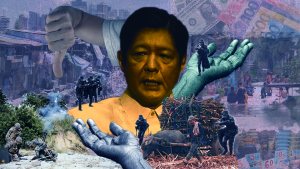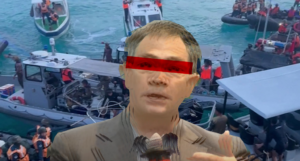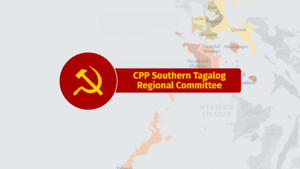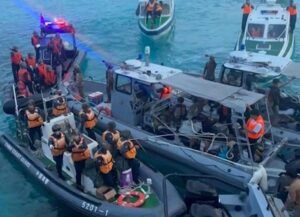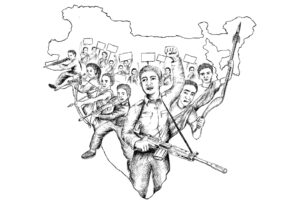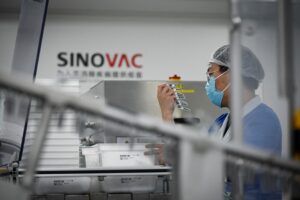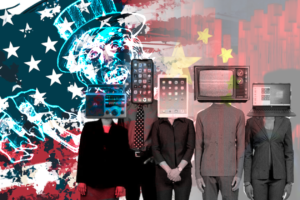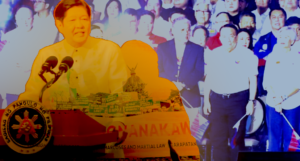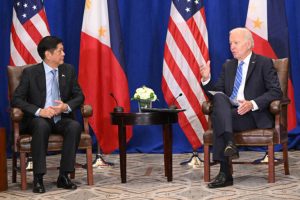Mark Bonifacio's 160th birth anniversary with even greater energy to wage armed resistance for genuine national liberation
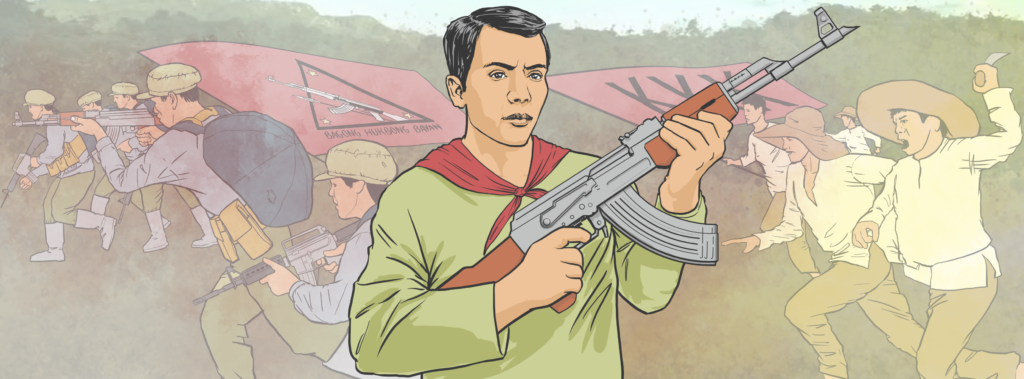
The Communist Party of the Philippines (CPP) joins the Filipino people in marking today the 160th birth anniversary of Andres Bonifacio, hero of the Filipino working class and icon of the people’s militant resistance against foreign colonial oppression.
After more than a century of US colonial and semicolonial rule in the Philippines, the Filipino people continues to be inspired by the selfless dedication of Bonifacio and the Katipunan revolutionaries who waged armed revolution through guerrilla warfare against Spanish colonialism to end three centuries of foreign oppression.
It is now even more imperative to draw strength and lessons from the armed resistance led by Bonifacio and the Katipunan, as well as from the succeeding armed resistance movements that followed and continue to be waged against imperialist domination and control. Heightened US military intervention under the puppet Marcos regime underscores the importance and urgency of fighting for national liberation to prevent the country from being dragged into the increasing threat of inter-imperialist armed conflict.
On this historic occasion, it is just appropriate to take quick look back at the history of the Filipino people’s resistance, mainly the revolutionary armed struggle for national and social liberation, and discuss how this links to the present day national democratic revolution under the leadership of the Communist Party of the Philippines. We must commit themselves to the task of enlightening the Filipino people about their history of resistance especially as the country is further being strangled by US imperialism.
Bonifacio’s strengths and weaknesses
Andres Bonifacio drew inspiration from the ideals of liberty, equality and brotherhood of the old bourgeois democratic revolution in France and embraced the Filipino people’s aspiration for freedom from colonial oppression. He was stirred by Jose Rizal’s novels which were critical of Spanish colonial rule, but was also keenly aware of the limits of the reformist propaganda movement through which Rizal and his coterie of writers employed the tactic of “appealing” to Spain.
Bonifacio founded the Katipunan (Kataas-taasan, Kagalanggalangang Katipunan ng mga Anak ng Bayan) on July 7, 1892 which rallied the workers and peasants masses under the flag of national liberation. After centuries of scattered revolts, the Katipunan united the Filipino people under one banner and one resistance. Through secret methods of organizing, the Katipunan led a force of several tens of thousands which spread from Manila to Rizal, Batangas, Laguna, Cavite, Bulacan, Pampanga, Tarlac, and Nueva Ecija, and as far as Pangasinan and Ilocos, and provinces in Bicol region in Luzon; in Aklan province and Cebu in the Visayas; and Bukidnon and Misamis provinces in Mindanao.
The Katipunan initiated the armed revolution against Spanish colonialism on August 24, 1896. The flames of the armed resistance soon spread across the country. The execution of Rizal by the Spanish forces in 1896 crystallized the necessity of waging armed revolution to attain freedom from armed occupation by the Spanish colonial power. Most of the Katipunan’s forces were armed only with machetes (bolo or sundang), with a few pistols and even a fewer rifles taken from the Spanish armed colonial forces. But they steadily eroded on the strength of the Spanish forces through guerrilla warfare and with the support and participation of the masses. By 1898, the Katipunan had established political power in majority of the country.
Although the Katipunan was mainly a movement of workers and toiling masses, it was infused by the ideology of the democratic bourgeoisie, and not of the working class. This was enough in waging a war for national liberation, but was not enough to fend off the maneuvers and political attacks of the illustrado class (the big landlords and merchants) to take away the leadership of the Philippine revolution, murder Bonifacio, and offer the Philippines to the “benevolent assimilation” of US imperialism.
Many parts of the Katipunan will continue to wage armed resistance against US colonial aggression until the first decade of the 20th century. Forces led or inspired by the Katipunan, as well as Moro fighters, staged armed uprisings in to resist US colonial forces which carried out a brutal campaign of suppression resulting in the deaths of around a million people (of a population of seven million). The armed resistance will eventually be quashed by the lack of clear class leadership, but the embers of national liberation will continue to burn in the hearts of the Filipino people, and will ultimately be reignited in the coming decades.
Continuing armed resistance for national freedom
Inspired by Bonifacio and fired by the patriotic spirit, working class organizations emerged in the first few decades which eventually led to the founding of the Communist Party of the Philippine Islands on November 7, 1930, headed by its first chair Crisanto Evangelista. Together with unions and workers federations, it led the struggle of workers in Manila and nearby towns and united them in the struggle for fair wages and better working conditions, and roused the people under the banner of “Death to Imperialism!,” but failed to link up comprehensively with the broad peasant masses in the countryside.
The CPPI merged with the independently organized Socialist Party of the Philippines in 1938 which created positive conditions for building the worker-peasant class alliance. The Party, whose leadership was based principally in Manila, was preoccupied with practical actions and agitation for a communist paradise. It failed to apply Marxism-Leninism to analyze the colonial and semifeudal conditions in the country and the necessity of waging a national democratic revolution through protracted people’s war.
Forced by circumstances of Japanese colonial annexation and fascist suppression, the merger party formed the People’s Army Against Japan (Hukbong Bayan Laban sa Hapon or Hukbalahap) in 1942 and successfully carried out guerrilla warfare after overcoming the erroneous policy of “retreat for defense” of the pettybourgeois Lava leadership. The people’s war spread throughout Central Luzon, many parts of the Southern Tagalog region, as well as other parts of the country and established independent people’s regimes. These victories and achievements were, however, squandered by “Left” and Right opportunist errors by the Lava leaders who dissolved the people’s army and transformed it into a veteran’s association and abandoned armed struggle, later turned to all-out reformism and parliamentarism, and after being suppressed, turned back to military adventurism, and ultimately complete surrender.
The reestablishment of the communist party on the foundations of Marxism-Leninism-Maoism, and forming the New People’s Army (NPA) in 1969 reinvigorated the Filipino people’s revolutionary armed resistance for national and social liberation, based on a clear and comprehensive understanding of the semicolonial and semifeudal conditions and the need to wage a national democratic revolution.
Despite being weak and small, and fighting a bigger and stronger armed force serving as puppet army of the biggest imperialist power, the NPA has surpassed all armed resistance movements in the Philippines in terms of the strength and breadth it has achieved.
Inspired by Bonifacio, guided by Marxism-Leninism-Maoism, under the absolute leadership of the CPP, and drawing lessons from the past, the NPA comprehensively wages people’s war: it carries out extensive and intensive guerrilla warfare; implements widely the minimum program for land reform, and the maximum program in some areas; and establishes organs of political power based on the organized strength of the masses. It has made great strides in the past but has also suffered losses resulting from its own weaknesses and errors. But through self-criticism and rectification, the NPA continues to advance and overcome all obstacles, always with the aspirations of the people in the hearts of valiant Red fighters.
Present necessity for armed and other forms of resistance to US imperialist domination
The need for the Filipino people to wage and carry forward the revolutionary armed struggle, as well as other forms of resistance, for national and social liberation, is now even more urgent and imperative. This is in the face of heightened state terrorism goaded by US military intervention under the puppet Marcos regime, and ever rising threats of inter-imperialist war that threatens to drag the country into a conflict that will surely bring disaster to the broad masses of the people.
The US imperialists are carrying out two-pronged military intervention in the Philippines: one is directed against the New People’s Army, and the other, against its imperialist rival China. In both cases, the US employs the Armed Forces of the Philippines (AFP) as its puppet army.
The US military is using the AFP to host and “interoperate” with its units under the US Indo-Pacific Command. Through the Enhanced Defense Cooperation Agreement (EDCA), the US has established at least nine military facilities across the country, to position its weapons, military conveyances and troops in strategic locations in the country, practically turning the country into a large military base. These US military facilities, where the US arrogantly exercises extraterritorial rights, are located at Basa Air Base in Pampanga, Fort Magsaysay in Nueva Ecija, Lumbia Air Base in Cagayan de Oro, Antonio Bautista Air Base in Palawan, Mactan Benito Ebuen Air Base in Cebu, Camilo Osias Naval Base in Sta. Ana town, Cagayan, Lal-lo Airport in Lal-lo town, Cagayan, Camp Melchor dela Cruz in Gamu, Isabela, and in the Balabac island, southernmost island in Palawan province.
The US government is pursuing a geopolitical strategy to establish sole hegemony in Asia, particularly in East and Southeast Asia, by encircling China from the so-called “first island chain.” The US wants to push back against China’s growing economic and military influence, and provoke it to war by inciting Taiwan independence, push “stability” in the Korean peninsula and “freedom of navigation” in the South China Sea.
In order to establish its military dominance of the South China Sea, the US is taking advantage of the grievances of the Filipino people against Chinese armed incursions and military facilities within its maritime territory in the West Philippine Sea to push the AFP to carry out more and more maritime operations and cause China to expose its aggression and high-handedness.
The US has long been directing the AFP in conducting counterinsurgency operations against the NPA. American military advisers are embedded in the AFP, as well as in the PNP. The US regularly conducts aerial and electronic surveillance in the Philippines, supplies the AFP with intelligence information, and direct combat operations on the ground. On US instigation, the AFP has been carrying out a now five-year strategic offensive against the NPA in the vain hope of crushing the Filipino people’s anti-imperialist armed resistance. Through foreign military financing, the US supplied the AFP with jet fighters, helicopters, drones, howitzers, missiles, bombs and other weapons to carry out an all-out war of state terrorism against the peasant masses and national minority people in the rural areas.
The US imperialists want to see the “strategic defeat” of the New People’s Army in order to have the AFP fully committed to its drive to establish hegemony and counter China’s growing power. Thus, by continuing to wage extensive and intensive guerrilla warfare across the country, the NPA is able to prevent the Filipino people from being completely dragged into an inter-imperialist war that the US wishes to ignite, using the country as its springboard. The US is also keenly aware that igniting a major armed conflict will create conditions that can be taken advantaged of by the NPA and all revolutionary forces led by the CPP.
The Marcos regime is the current concentrated expression of the reactionary neocolonial state dominated by US imperialism and ruled by the comprador big bourgeoisie and big landlord class. It continues to carry forward Duterte’s war of terror marked by widespread military abuses. It employs brutal tactics including extrajudicial killings, massacres, abductions, torture, garrisoning of entire communities, population control, food and economic blockades and other gross violations of human rights and international humanitarian law. This war of state terrorism and armed suppression is most severe in areas that are targets of expanded operations of mining companies, plantations, energy, ecotourism and other infrastructure projects.
In the face of heightening US intervention, worsening subservience and intensifying state terrorism of the Marcos regime, it has become pressing for the Filipino people to unite and fight to advance their patriotic and democratic demands. They must build the broadest united front against the EDCA, the Visiting Forces Agreement, the Mutual Defense Treaty and the Bilateral Security Guidelines, demand the dismantling of all US military bases and facilities, and the withdrawal of all foreign US troops in the country. They must not allow the US to continue using the country as a military foothold to the detriment of the Filipino people’s aspirations for freedom and peace.
All the oppressed and exploited classes and sectors must fight to carry forward their demands and defend their civil and socioeconomic rights against the anti-people neoliberal policies of the US-Marcos regime. All these democratic aspirations cannot be attained under US imperialist domination, and are intrinsically linked to the fight against US military interventionism and hegemonism.
The suffering of the Filipino people under Spanish colonialism which roused the Katipunan to wage armed resistance is comparable to the present-day suffering of the Filipino people under more than a century of US colonial and semicolonial rule. Waging armed resistance to fight tyranny and attain national and social liberation remains just and necessary as ever.
Bonifacio and the Filipino youth
Andres Bonifacio was 29 years old when he founded the Katipunan in 1892; incidentally, so was Prof. Jose Maria Sison, when he reestablished the Communist Party of the Philippines in 1968.
It was no coincidence that Ka Joma founded the Kabataang Makabayan on November 30, 1964 on Bonifacio’s 101st birthday. The occasion underscored the patriotic principles espoused by KM are essentially a continuation of those of the Katipunan for genuine national freedom. In his founding speech, he emphasized how Bonifacio serves as a model of revolutionary militance and courage for the Filipino youth and fighters for national democracy. The assertion made 59 years ago, rings true today.
As we mark Bonifacio’s 160th birthday today, let us look forward to the 60th anniversary of the Kabataang Makabayan next year, and vow to strengthen the KM to arouse, organize and mobilize the Filipino youth for the people’s democratic revolution.
Several generations of Filipino activists and revolutionaries have stood up and fought since the founding of the KM in 1964 and the foundation of the CPP in 1968. At every juncture, the Filipino youth have played an important role serving as the main source of physical energy and indomitable spirit for fighting–whether in street demonstrations or in the battlefield. Indeed, the New People’s Army is ever a young army with its ranks filled with youthful Red fighters ever determined to wage armed resistance to fight for a bright future.

